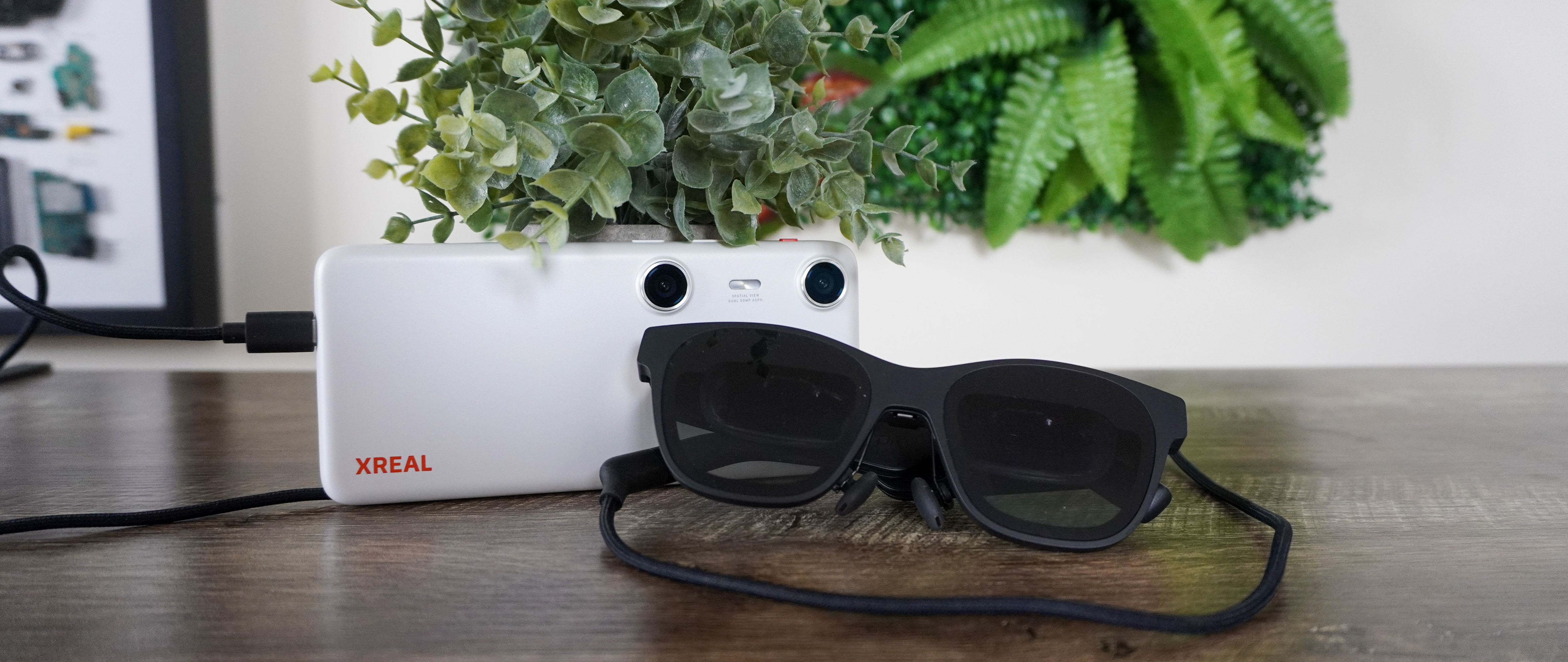Tom's Guide Verdict
The Xreal Beam Pro is a good idea on paper, which is fun to use and inexpensive for the pleasure. If you learn the ways of the AR power user, you can turn this into a nifty little spatial computer. But since the team got this working on Android, surely this interface could just be an app, which wouldn't be hampered by the slower internals of Beam Pro.
Pros
- +
Pretty slick UI control
- +
Spatial cameras are fun to use
- +
Google Play services is a game changer
- +
Two USB-C ports eliminate battery anxiety
Cons
- -
Battery life isn’t great
- -
A little underpowered for multitasking
- -
Can’t connect to other devices for smooth follow
- -
This could just be an app for many phones
Why you can trust Tom's Guide
The Xreal Beam Pro is a bit of an enigma — even though it is an amazing supporting cast member to the Xreal Air 2 glasses. Mysterious, I know, but let me explain.
You see, this $200 smartphone lookalike is the result of 3 key problems people are having when it comes to using AR glasses:
- Battery life — it’s no shocker that connecting an external 1080p display to your phone does drain the battery dramatically faster than usual.
- Device fragmentation — Not all smartphone USB-C connectors are the same, and some don’t support video out.
- Give me something spatial — Using AR glasses for simply screen mirroring your phone is all fine and dandy, but it isn’t really spatial computing.
Beam Pro responds to these emphatically with an Android slab that packs a large battery paired with a second USB-C port for charging while using, and a new version of NebulaOS that feels very Apple Vision Pro-esque from the bubbly Home Screen to the split-screen multitasking — all controlled with the combination of the on-device gyroscope and touch controls.
Sure, it’s a little rough around the edges with Bluetooth latency issues, multitasking slowdown because of that lower end chipset and some interesting UI bugs. But on those long distance trips, the Beam Pro really comes into its own — especially with the addition of Google Play services unlocking access to a ton of apps. And even when out and about, that spatial camera is pretty great at capturing depth in photos and video.
But the more I think about it, this missing link also feels like one many people shouldn’t have to buy. My question is simple: why can’t this just be an app?
Xreal Beam Pro: Cheat Sheet
- What is it? It’s not a phone (even though it looks like one). This is a device that works exclusively with your Xreal AR glasses to provide a spatial computing experience.
- Who is it for? This is for anyone with the likes of the Xreal Air 2 specs.
- What does it cost? Pricing starts from $199, and goes up to $249 for more storage.
- What do we like? The Beam Pro unlocks a spatial computing experience on AR glasses — knocking down that barrier of just being a glorified external display in a pair of specs. Google Play services gives you access to download so much content for offline use on planes (a particular highlight in its usability).
- What don’t we like? The internals are a little underpowered when it comes to the two-app multitasking, I do miss have the display smoothing on other external devices like I got with original Beam, and now Xreal has proven its software can run on an Android device, I’d hope this could be an app.
Xreal Beam Pro: Specs
| Price | From $199 |
| Display | 6.5-inch 1080 x 2400-pixel LCD, 60Hz |
| Chipset | Snapdragon spatial companion processor |
| RAM | 8GB |
| Storage | 128GB / 256GB |
| Cameras | Dual 50MP stereo 3D cameras |
| Battery | 4,300 mAh |
| Dimensions | 6.4 x 2.9 x 0.4 inches |
| Weight | 7.3 ounces |
Xreal Beam Pro: What we like
Look past the confusion of this resembling another Android phone-like slab that takes up another pocket, and you’ll see it’s much more than that. In fact, the Beam Pro seems to be the missing link to that spatial computing experience on-the-go (outside of downloading the Nebula app on your laptop).
Spatial and special
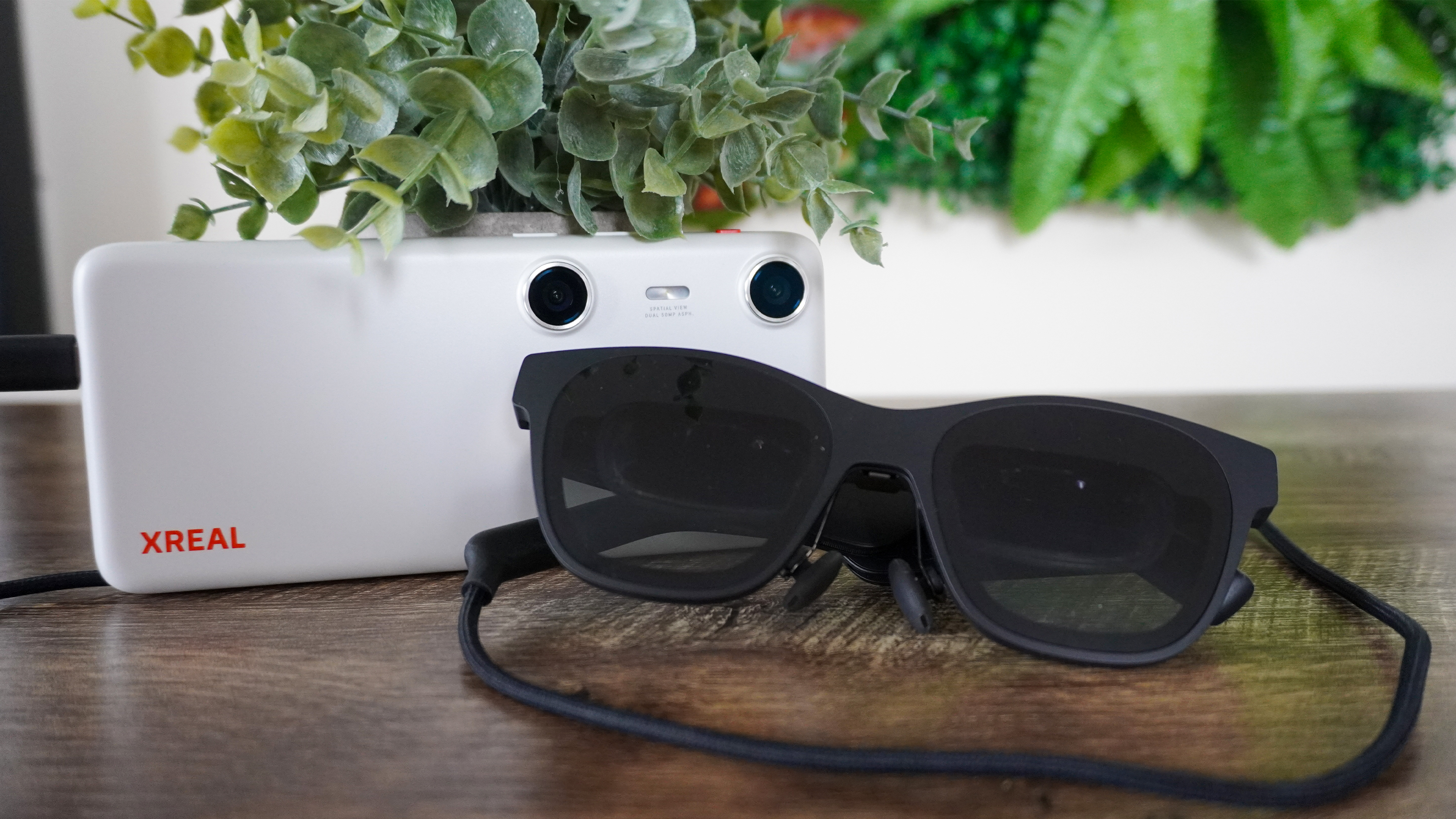
So, you plug it into your Xreal glasses. After a couple of updates run, you’re immediately transported to the homescreen, which as I mentioned above, looks as if the company’s been doing a little copying of Apple’s homework. But not in a bad way, mind you, because Nebula’s UI is easy to get around and fun to use.
Don’t get me wrong. Without elements like hand tracking, the UI control is definitely not as intuitive as tapping an icon (I don’t have the Xreal Air 2 Ultra to test that side of things), but the Beam Pro’s accelerometer + touchscreen combination is a slick way to get around.

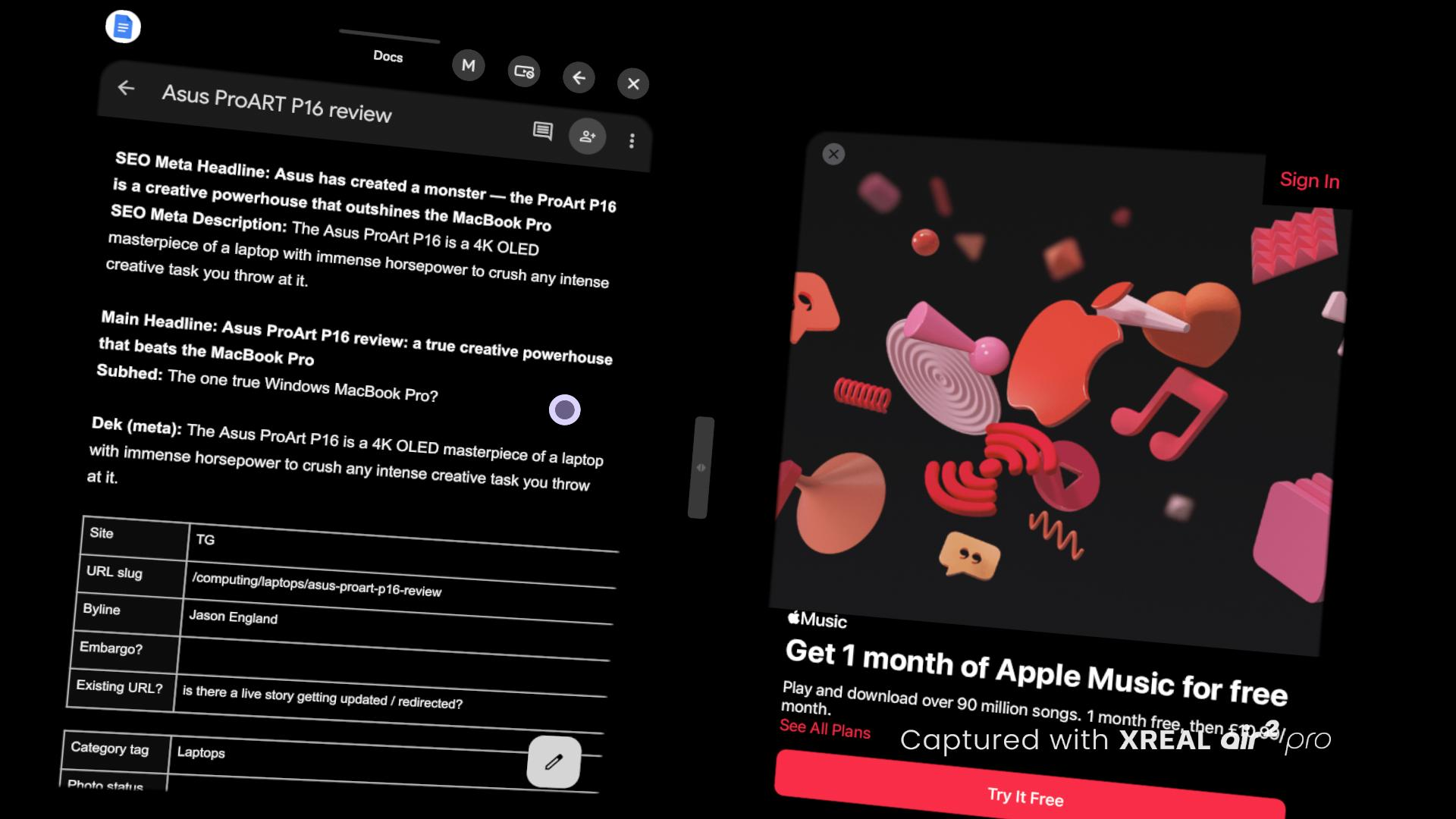
I’ve seen older reviews of the first iteration of this OS lament the general bugginess of trying to select apps, open content and generally navigate the interface. Luckily, with the update we received when opening our Beam Pro, a lot of this was cleared up.
Some tracking issues still persist, such as the screen slowly drifting away if you have it locked in place while moving on a plane or train. But that can be worked around by turning on smooth follow with a press of that bright red action button on the side. All-in-all, this is pretty damn slick.
The magic ingredient is Google
When I was being told all about the Beam Pro a while back, the fact it uses Google Play Services on top of Android 14 went by relatively quickly in favor of the other more spatial features. But au contraire — I think it’s one of the superpowers of this device.
You see, AR glasses companies are looking at different types of hardware to give you fun stuff to do with your specs outside of plugging them into your laptop. In the case of RayNeo, you’re getting a glorified Google TV remote control, whereas for the Viture Pro, that SpaceWalker app is amazing but is frustrating to get off the ground.

With all the Google goodness in the Beam Pro, logging into everything is seamless and you’ve got access to the many hundreds of thousands of apps — with the main ones you’d use blown up to a great full-screen AR experience (with the Android features built-in).
Example: I was done dirty by an airline recently, who stuck me on a long flight with no screens. Having the Beam Pro packed to the gills with episodes of Archer, The Office and a couple movies for offline viewing meant the journey (pardon the pun) absolutely flew by.
Of course, there are other benefits at play here. Connect a Bluetooth keyboard and mouse, and you’ve got the spatial computing version of Samsung Dex — a full office suite for all your word processing/presentation/spreadsheet/web browsing needs. I know that Nebula makes all of this possible, but Google Play is the real MVP here.
The cameras are better than you think
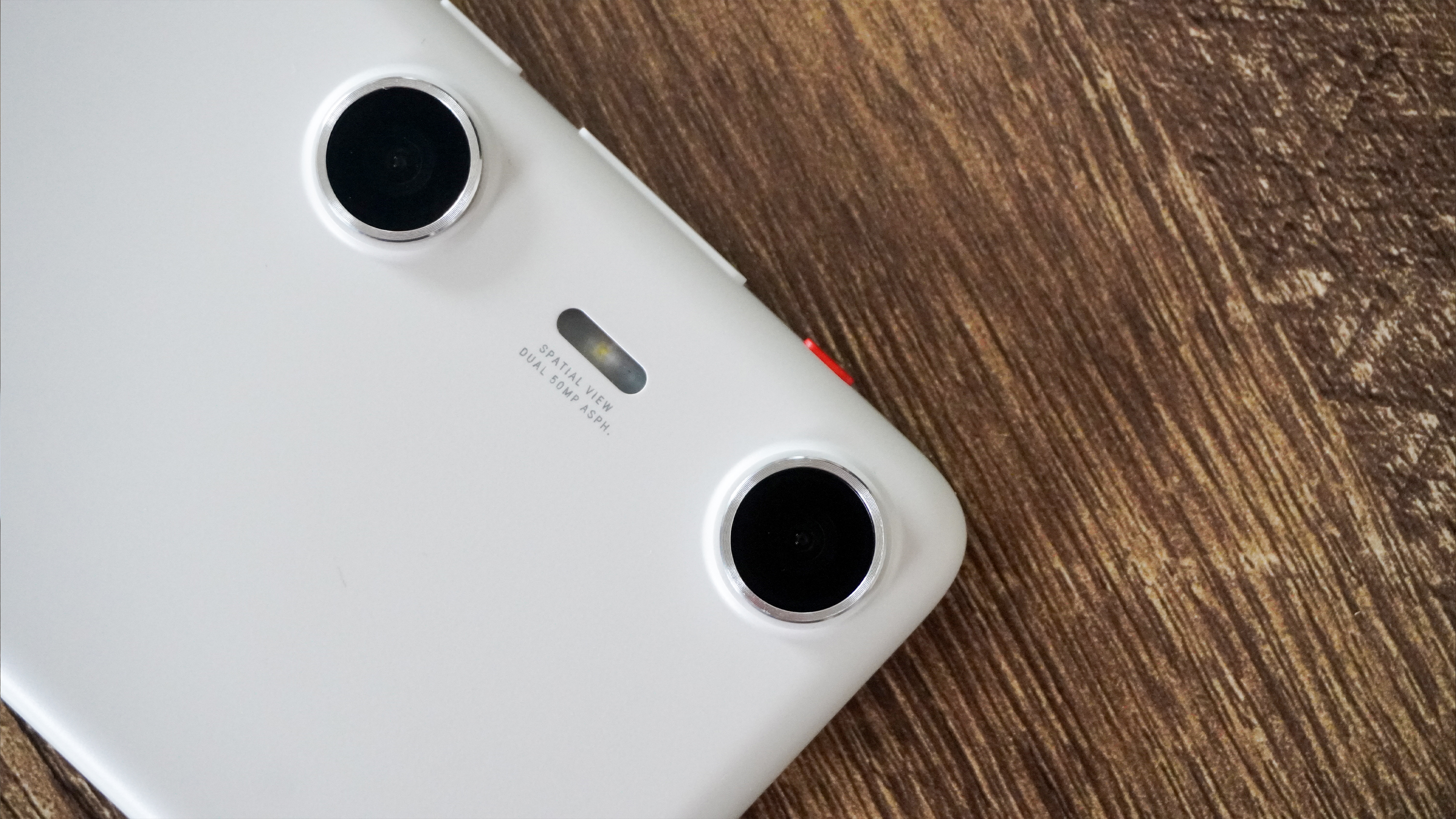
The moment I saw the dual cameras on the back of this, a $200 slab, I was nervous. Traumatized by the last time I saw 3D photos on a device this cheap (the Nintendo 3DS), I just assumed we were in for a similar world of hurt.
Well, you can breathe a sigh of relief, as the snappers back here are better than you think. The spatial photography is bright and colorful with enough detail and clarity to make seeing these back in AR really enjoyable.

Video takes a slight dip, but not enough to minimize the fun of watching your favorite moments back in 3D. Of course, with this being very much a secondary device to use with AR glasses, it’s a rarity that you’ll intentionally whip this out over your actual phone (which probably has a better specced camera). But for the immersive vibes, this is an admirable effort.
Xreal Beam Pro: What we don't like
As is the case with any new category of product (no matter how familiar they may be on paper), there are some issues to iron out, as well as bigger questions to ask of the Beam Pro.
Some teething issues
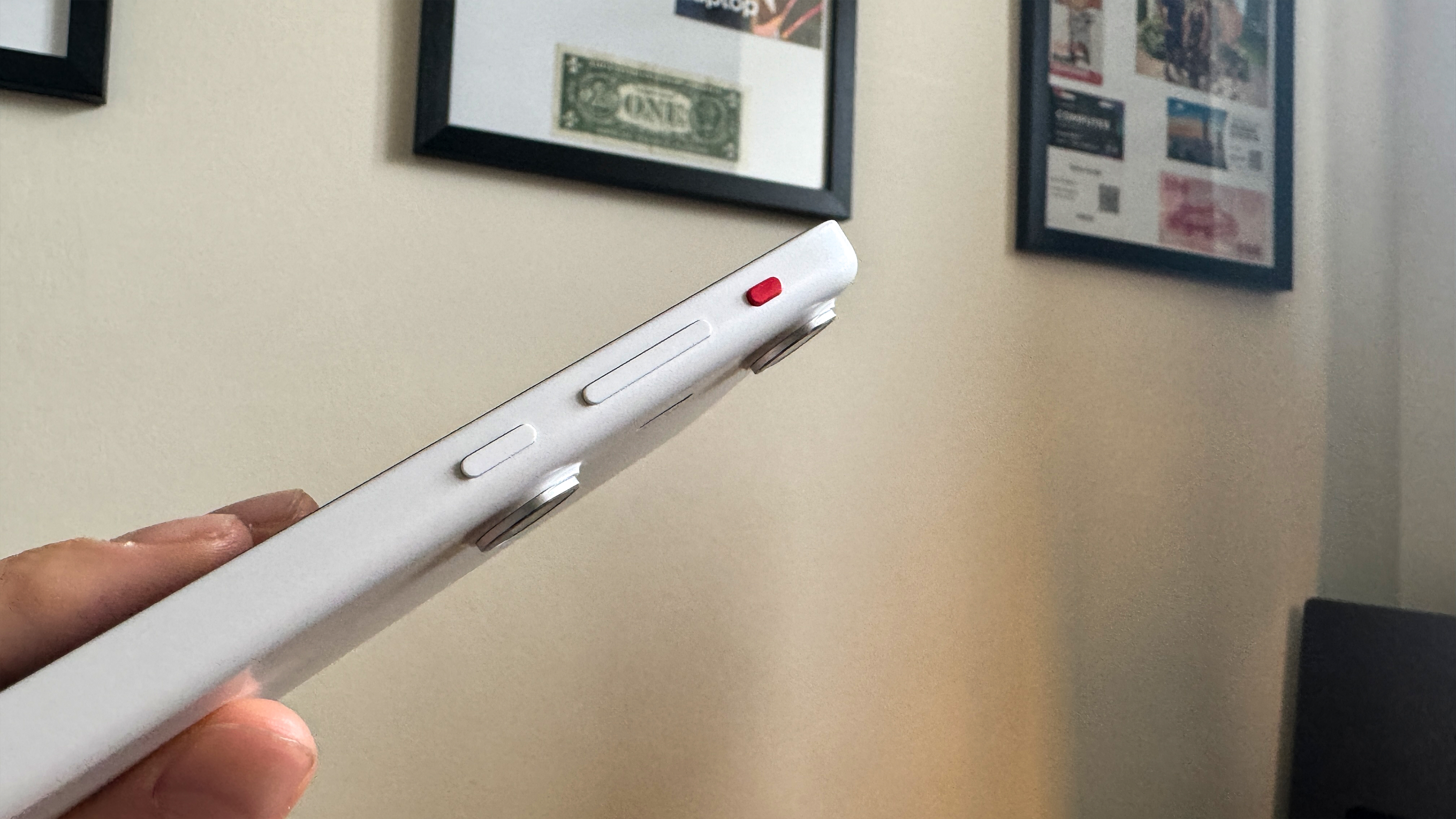
So before I get into the more fundamental issues with the Beam Pro, I just wanted to convey some of the smaller frustrations I had using this — some that I hope can be fixed in software, and others that are unfixable because it's in the hardware:
- Bluetooth earbud latency issues: the speakers on the glasses are fine in a completely silent room, but you won’t be using them on transport. Unfortunately, there’s a small 0.3(ish)-second latency between the audio and whatever is happening on screen. Sometimes you can ignore it, but on fast-moving content, it can be distracting.
- The screen can slip away: If you fix the screen in place, sometimes on moving transport, it can start to slowly disappear out of view. I think this could be some sort of tracking bug mixed with the accelerometer on the phone. Can’t be sure but think this would be fixable with an update.
- Losing one of the things I loved about the original Beam: Using the previous beam to add screen steadying capabilities to all my other devices made playing games during turbulence on a flight a much more visually comfortable affair. That second USB-C port on the Beam Pro supports charging-only, so don’t expect to do that here.
Longevity worries are warranted
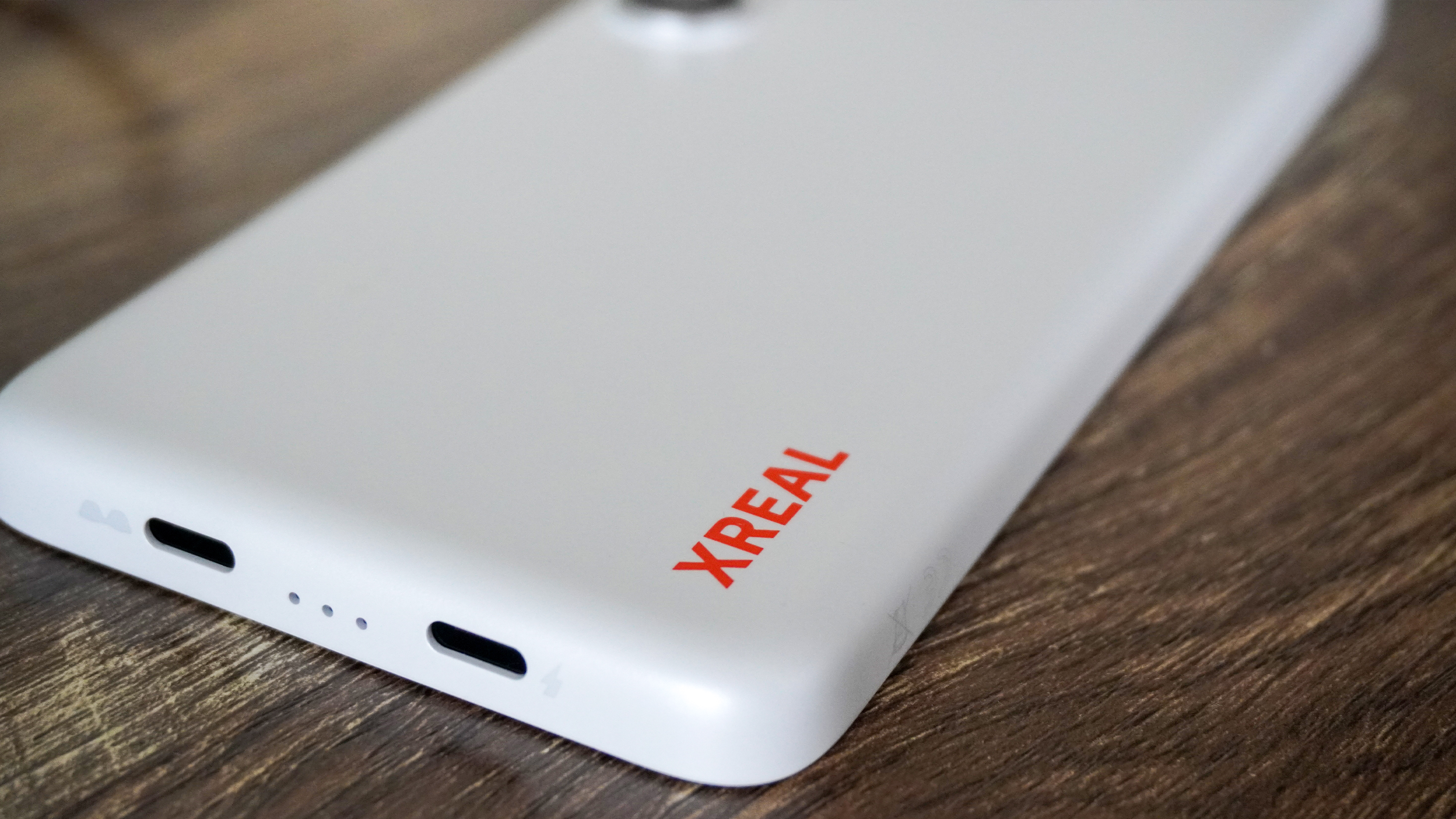
Yes, it has two USB sockets, so you can keep this topped up while you play — a great little addition if there’s a charging plug nearby. But when you’re without a plug, that battery goes down fast when you’re in Nebula OS.
After an hour of having Netflix open playing a film while browsing the web, I saw the battery sink from a full 100% down to 72%. So by that math, expect to maybe get around 3.5 hours of solid use out of this. That can of course change if you’re just doing a single task, but definitely something to keep an eye on.
Give this to the rest of us
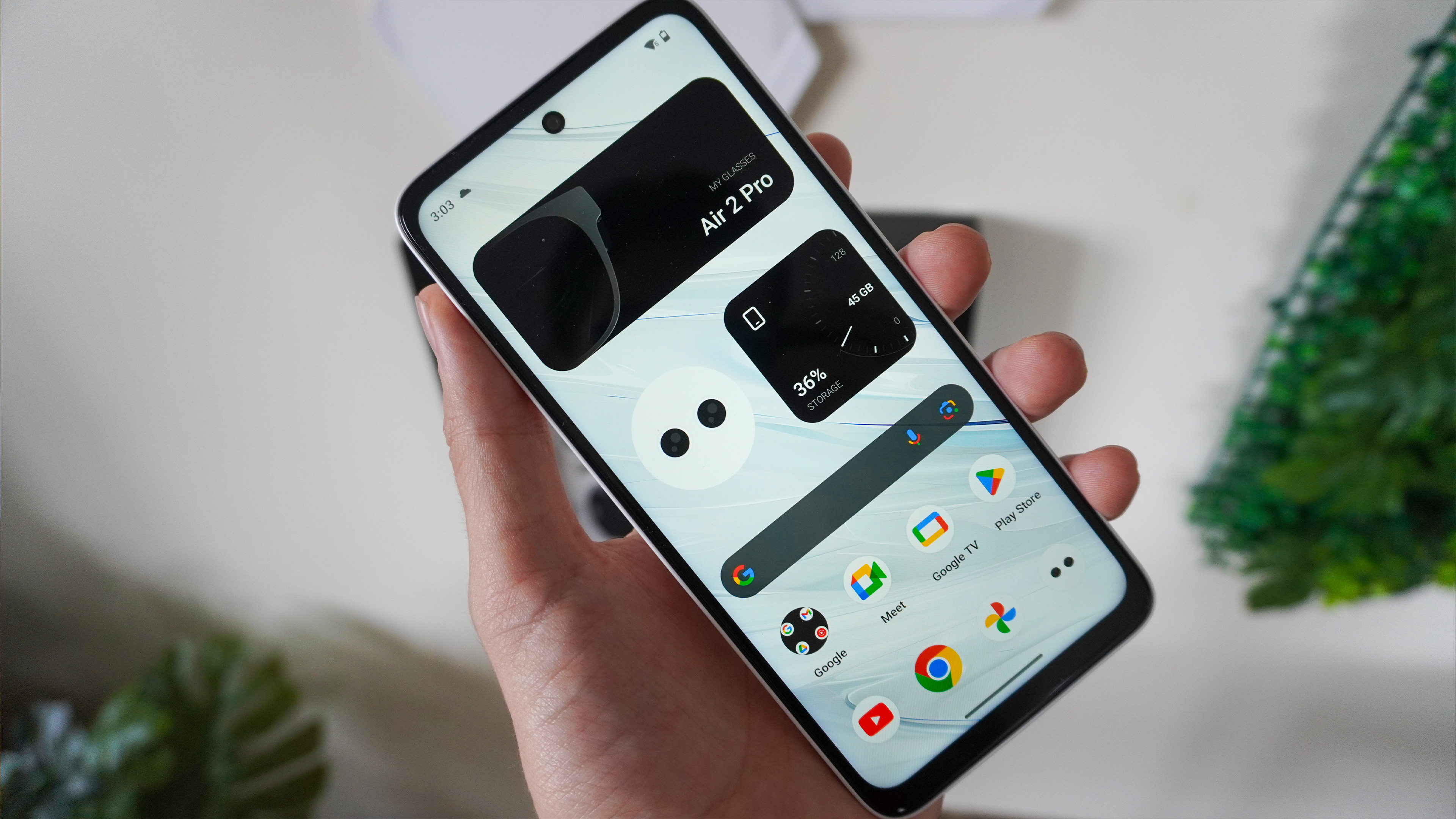
This is basically a low cost Android phone without the phone bits, and chances are you are already carrying a vastly superior device that can support these glasses. You can also eliminate the battery anxiety by buying Xreal’s hub.
The only thing that’s missing from this $39 workaround is the software, which Xreal is withholding to its own device. I get the reasoning — it would be difficult to develop Nebula to work across a vast number of Android phones, and having this UI is one of the big reasons to buy the Beam Pro. But I’d empathize with anyone who may be left with a bit of a sour taste in their mouth at this decision.
Xreal Beam Pro: Verdict
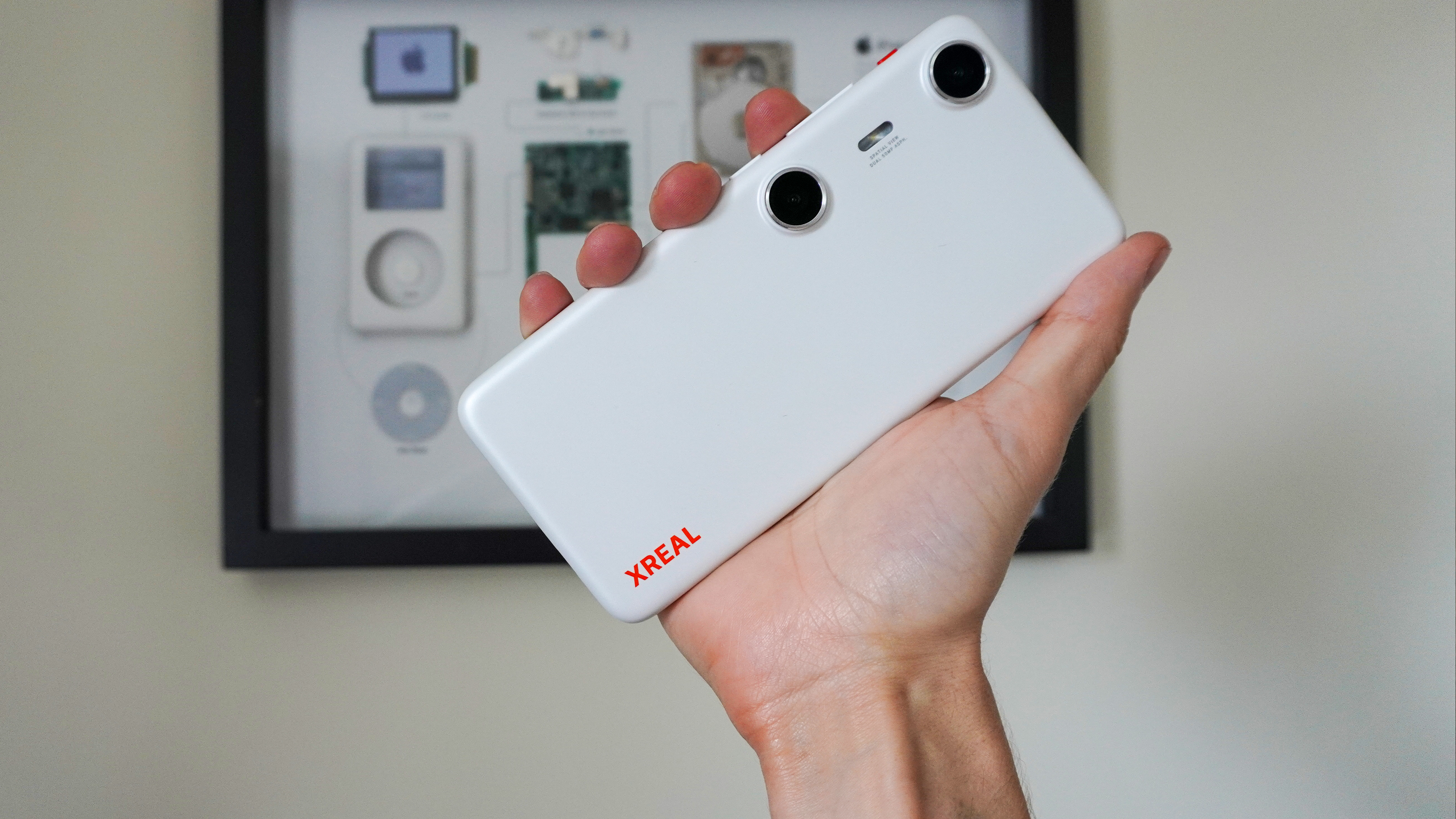
For all intents and purposes, the Xreal Beam Pro is a great little accessory that maximizes the feature set of your AR glasses. It’s still a bit of a diamond in the rough in its execution, and I wouldn’t judge you questioning the point of it, which is why there’s a very specific audience here.
If you are someone who travels a lot and have embraced AR glasses as the way to keep yourself entertained on trips, there’s a lot to love here with the simple UI and Google Play services giving you the option to download content for offline viewing/playing. And at $200, it's a low price of entry for what you do get.
But one obstacle Xreal keeps running up against is getting developer support, and I’m fairly confident that locking this intuitive UI behind another piece of pocket-filling hardware isn’t really going to help the situation.

Jason brings a decade of tech and gaming journalism experience to his role as a Managing Editor of Computing at Tom's Guide. He has previously written for Laptop Mag, Tom's Hardware, Kotaku, Stuff and BBC Science Focus. In his spare time, you'll find Jason looking for good dogs to pet or thinking about eating pizza if he isn't already.
